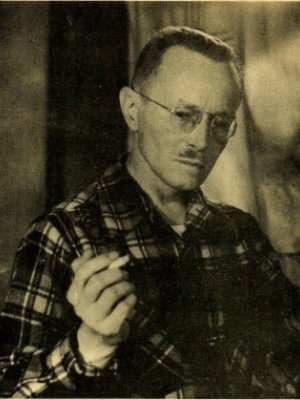Fredric Brown (Fredric Brown)

Fredric Brown’s science fiction novel What Mad Universe (1949) is a parody of pulp SF story conventions. Martians, Go Home (1955) is both a broad farce and a satire on human frailties as seen through the eyes of a billion jeering, invulnerable Martians who arrive not to conquer the world but to drive it crazy. The Lights in the Sky Are Stars (1952) tells the story of an aging astronaut who is trying to get his beloved space program back on track after Congress has cut off the funds for it – an accurate prediction of the actual conditions for a space program, at a time when many SF writers still tended to ignore or downplay the financial side of spaceflight. Its title might have been the inspiration for the title of the final episode of the anime Gurren Lagann, “The Lights In The Sky Are Stars”, as well as the second film adapting the events of the series. The short story “Arena” was used as the basis for the episode of the same name in the original series of Star Trek. It is similar to an episode entitled “Fun and Games” (1964) of The Outer Limits. Brown’s first mystery novel, The Fabulous Clipjoint, won the Edgar Award for outstanding first mystery novel. It began a series starring Ed and Ambrose Hunter, and depicts how a young man gradually ripens into a detective under the tutelage of his uncle, an ex–private eye now working as a carnival concessionaire. Many of Fredric Brown’s books make use of the threat of the supernatural or occult before the “straight” explanation at the end. For example, Night of the Jabberwock is a bizarre and humorous narrative of an extraordinary day in the life of a small-town newspaper editor. The Screaming Mimi (which became a 1958 movie starring Anita Ekberg and Gypsy Rose Lee, and directed by Gerd Oswald, who also directed the “Fun and Games” episode of The Outer Limits) and The Far Cry are noir suspense novels reminiscent of the work of Cornell Woolrich. The Lenient Beast experiments multiple first-person viewpoints, among them a gentle, deeply religious serial killer, and examines racial tensions between whites and Latinos in the US state of Arizona. Here Comes a Candle is told in straight narrative sections alternating with a radio script, a screenplay, a sportscast, a teleplay, a stage play, and a newspaper article. Fredric Brown wrote several short stories about Satan and his activities in Hell. Many of his science fiction stories were shorter than 1,000 words, or even 500 words.
Born
- October, 29, 1906
- USA
- Cincinnati, Ohio
Died
- March, 11, 1972
- USA
- Tucson, Arizona
Other
- Cremated

